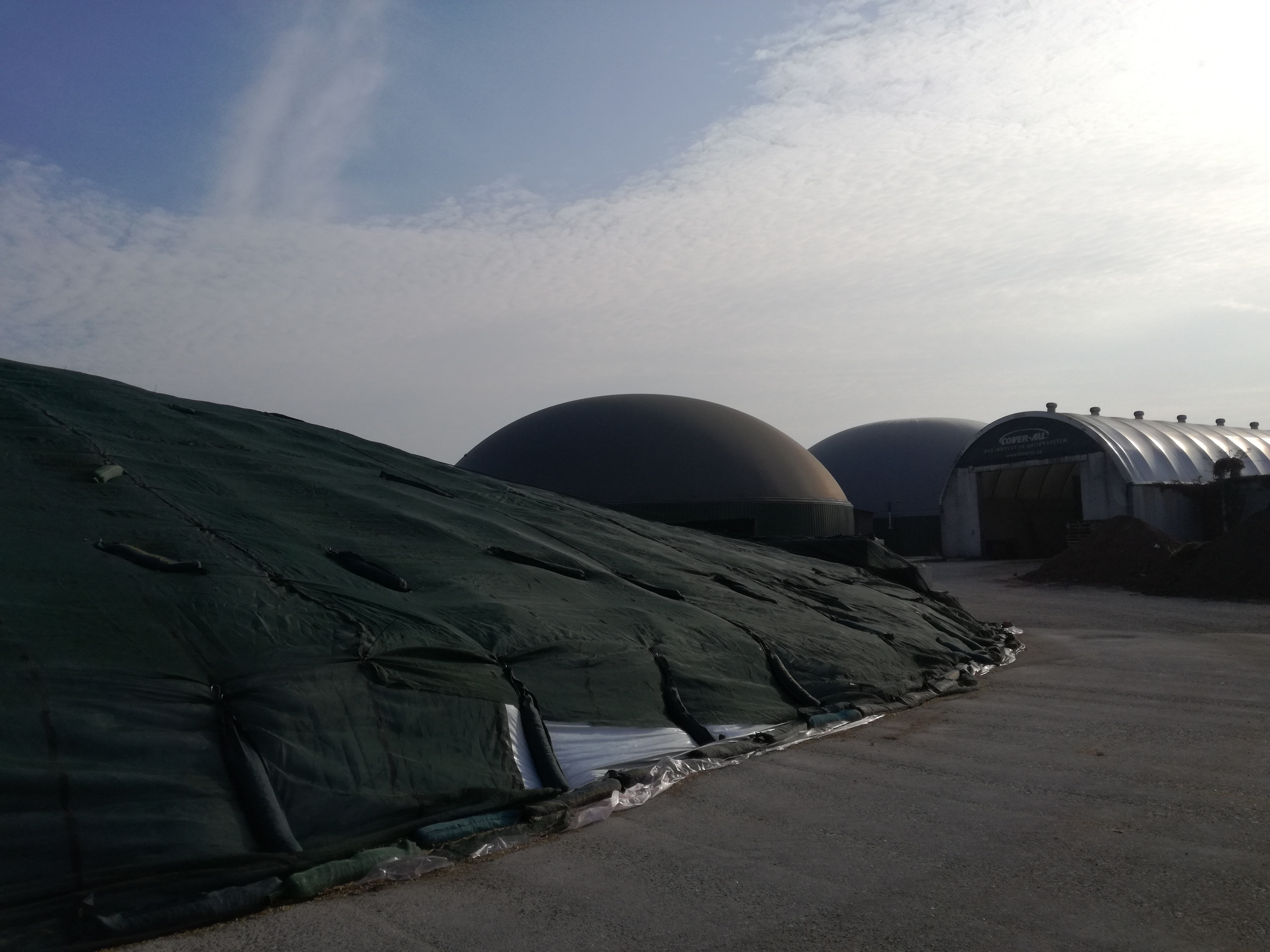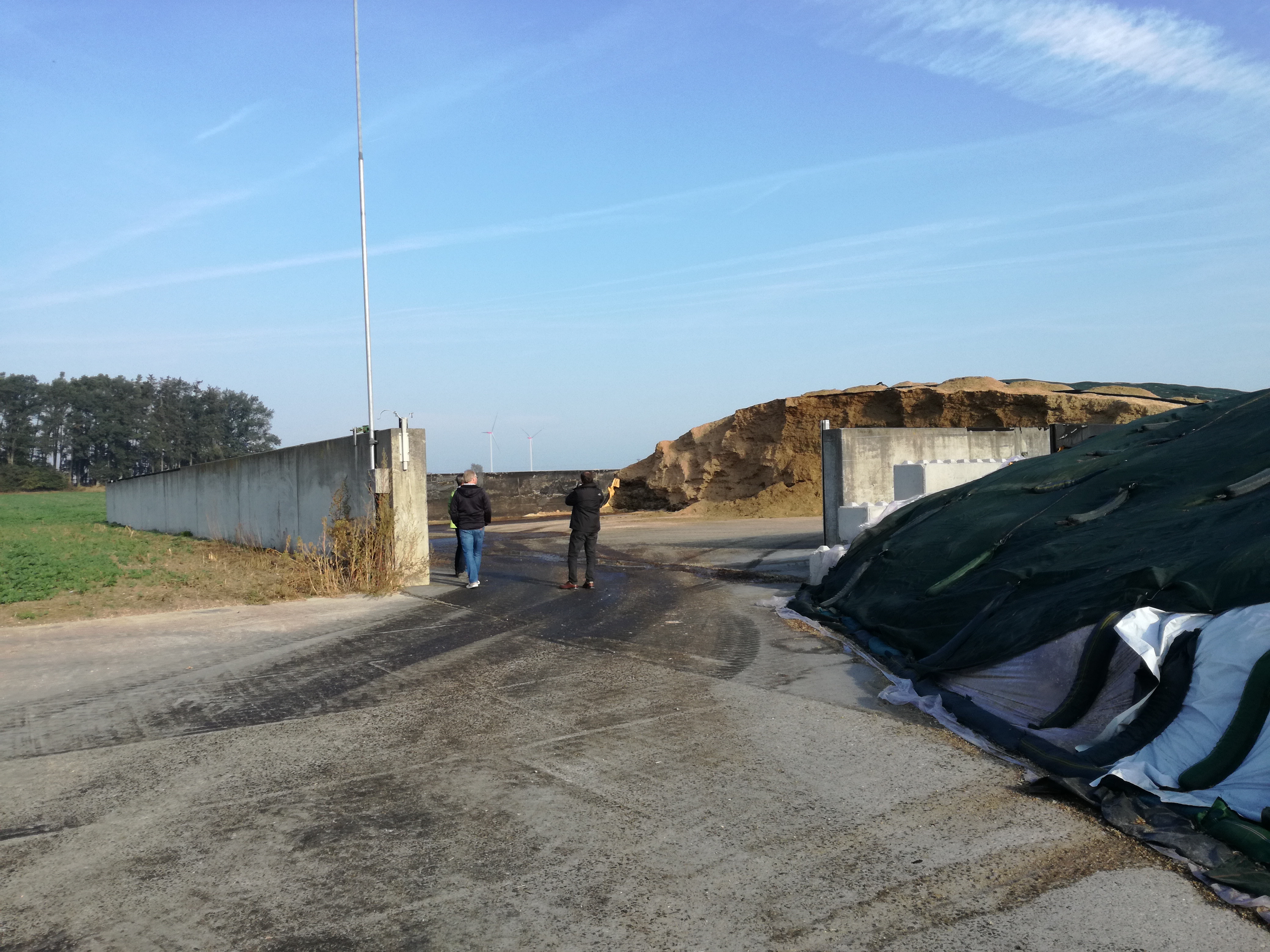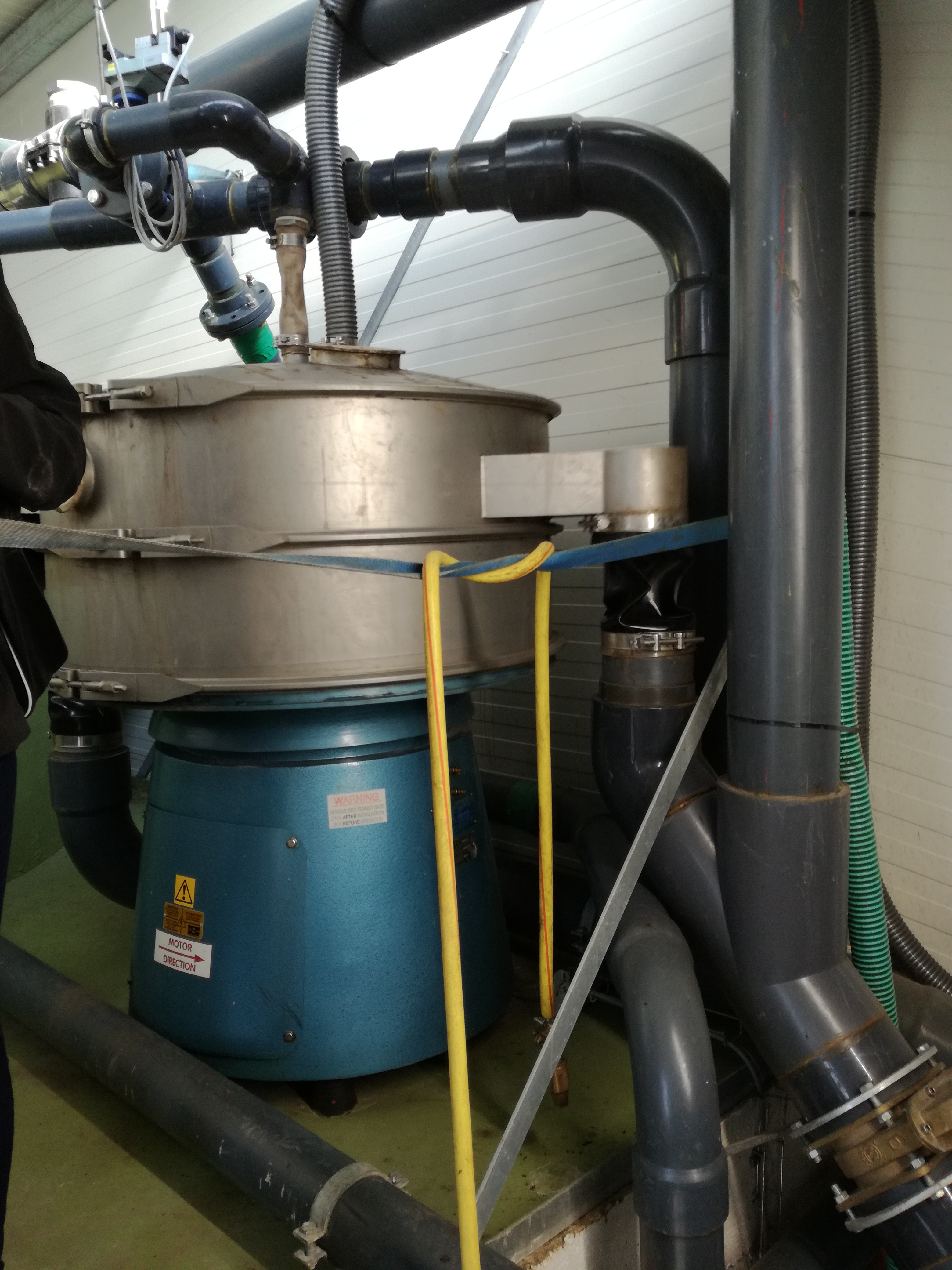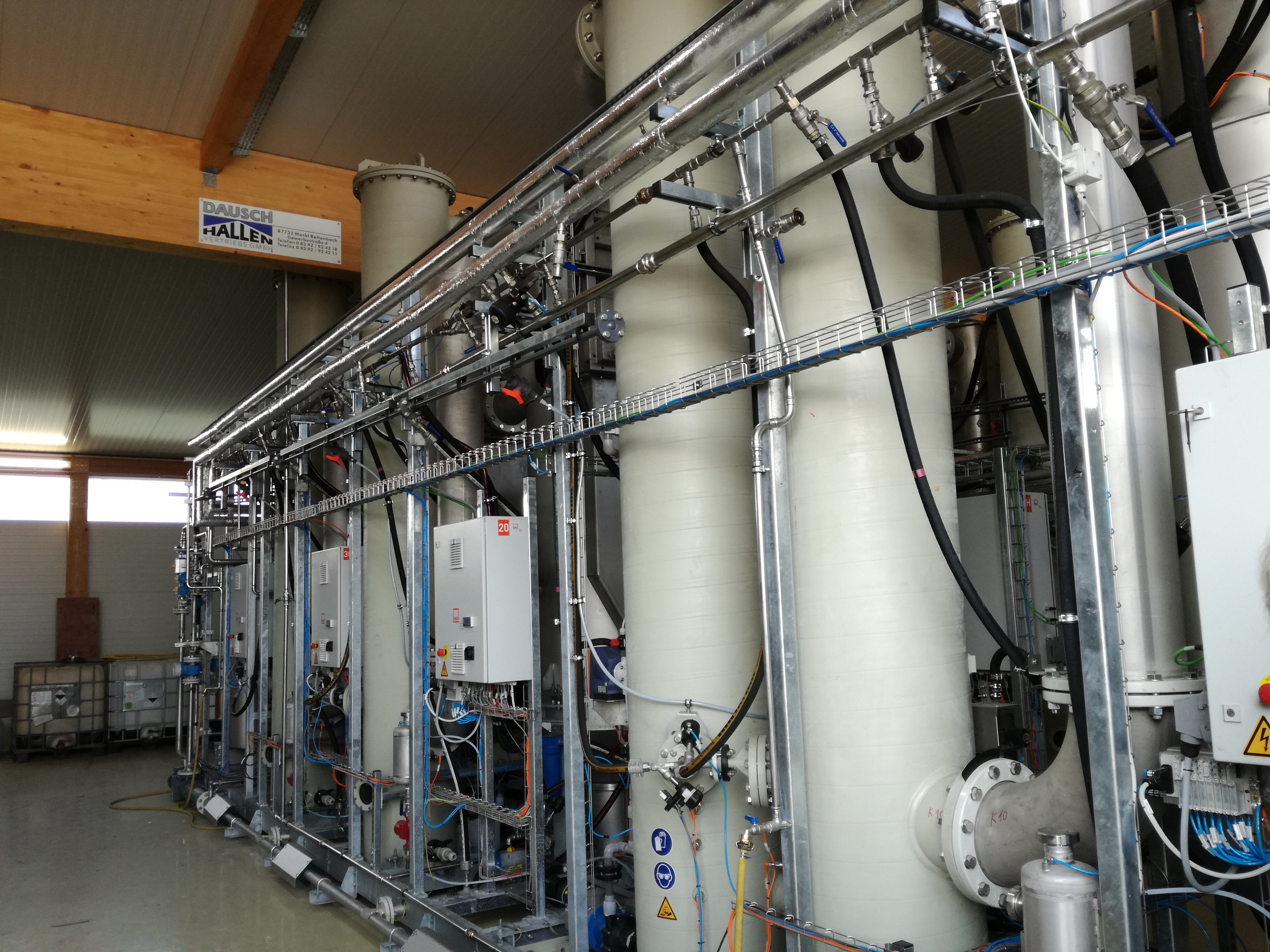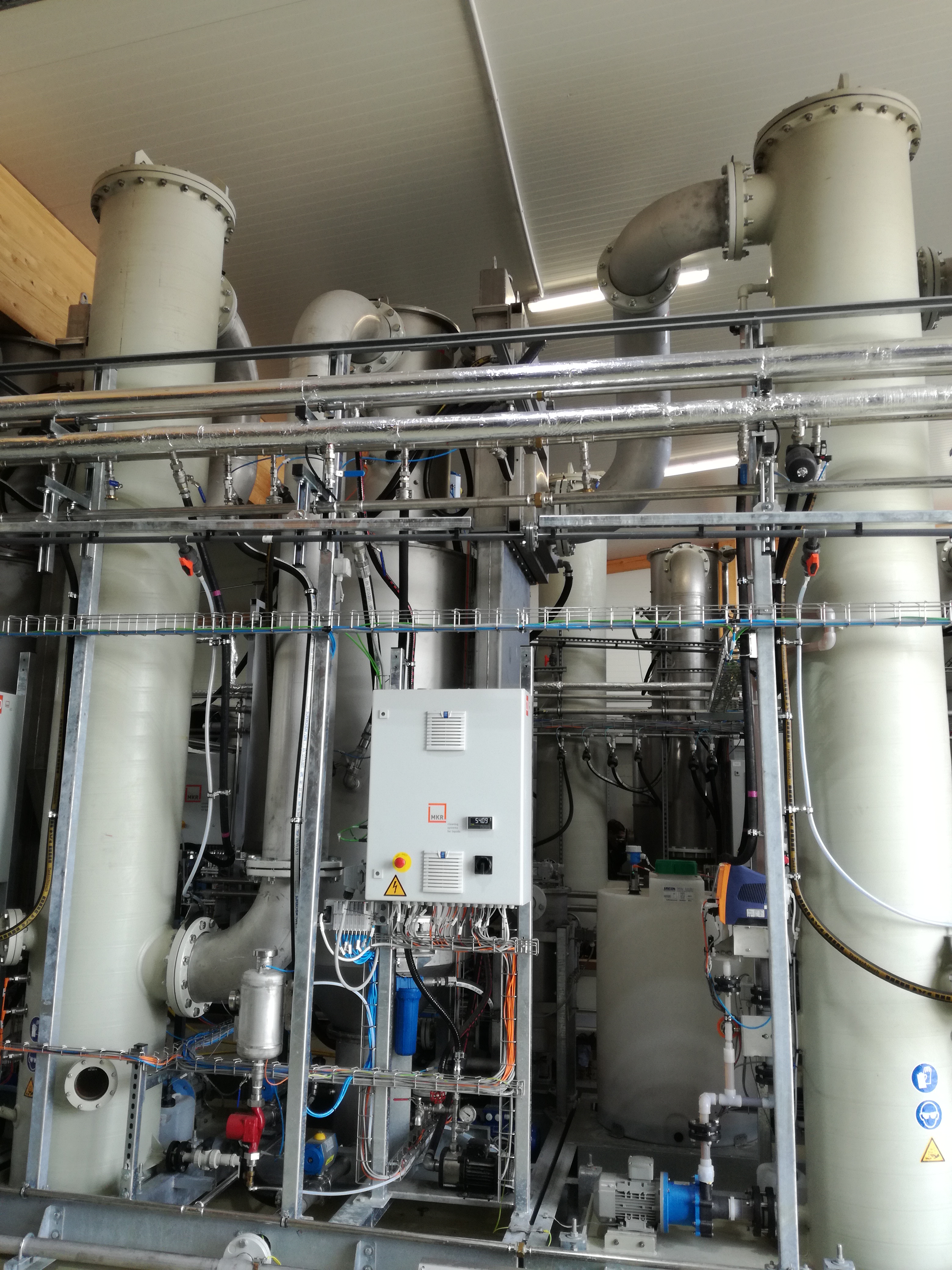SYSTEMIC visits Biogas Rück
The biogas plant in Merkendorf-Gerbersdorf in Germany has 4 digesters and a post digester.
They treat in separate lines organic waste and energy crops.
The energy crop-line feeds to 2 thermophilic digesters (each 1200 m³):
- -maize silage (150 ha/year)
- -green waste(20 ha/year)
- -corn-shred (350 ton/year)
- -pig slurry (1800 m³ /year)
The maize silage is stored outside covered by a foil in a walled area. Here maize silage is load up a small truck, to prevent spilling and driven to a machine that transports the silage with a conveyor belt to the digesters.
When in winter, the maize silage is all gone, the walls of the storage can be closed off and this is used as an open digestate storage lagoon. According to the owner there appear to be no real emissions, since sometimes even wild ducks are seen swimming on the digestate lagoon.
The organic waste line was built in 1995 and treats to the other 2 thermophilic digesters (also each 1200m³):
Leftover food, bio-waste, flotate and grease, blood and dairy waste.
All liquid wastes and slurries are unloaded in a drive-in building which can be closed off for emissions. There the liquids are pumped directly from the truck into a storage.
From this storage the feedstocks go to a heat exchanger which uses CHP heat to heat up oil and this heats up the liquid feedstocks up to 130°C and is hereby hygenized. After that, they are fed into the digesters.
Biogas from the energy crop line is burned in a CHP (Deutz) to 500kWel and the heat is recovered by a heat pipeline to the village of Gebersdorf to provide heat for households and 1 small industrial site.
The biogas from the organic waste line produces 430 kWel and is used on site to heat up the digesters and evaporators (see later).
The digestate from the energy crop line is used as a fertilizer for crops.
The digestate from the organic waste line is separated in a modificated vibrating sieve separator, which used to have an application in the industry where it separated oil and water.
The solid fraction store in a half open hangar and used as a fertilizer of Mr Rück’s own 90 ha of land.
The liquid fraction of the digestate goes to a vacuum evaporation system of MKR Metzger.
The evaporator (multiphase) has a pressure of -180mbar and operates at 60°C. The water evaporates together with the ammonia.
In a second step the ammonia vapor is scrubbed with sulphuric acid and an ammonia sulphate solution and clean condensate is obtained.
Each year 10.000 m³ of water is evaporated and condensed. The owner said that it was to only way to reduces costs of digestate disposal and prevent the biogas plant from downsizing.
The total cost of the plant was 900.000EUR for the energy crop line and 800.000EUR for the organic waste line. The plant can afford this, mainly because of the heat bonus and the reduces disposal costs for digestate.
Trials done with the ammonia sulphate showed that AS was more available for the crops than pig slurry and proved that there was less nitrate leaching.
The air from the truck delivery zone, separation zone was transferred to the engines and burned. Other than that, there was no air treatment.

